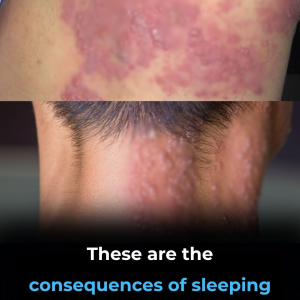
Some experts believe that veins can reflect aspects of your internal health, since changes in the body or environment may cause them to become more prominent. These signs often appear in veins on the head, eyes, hands, feet, and other areas.
Blue veins that show beneath the skin are normal veins, but if they suddenly become more visible in certain places, they may signal underlying health issues.
When Blue Veins Become a Warning Sign
Visible veins don’t just affect appearance—they can also hint at health problems that shouldn’t be ignored. If you notice veins appearing suddenly or unusually, it’s best to seek medical advice. According to specialists, the condition of your veins may reveal internal imbalances or stress on the body.
1. Veins on the Hands and Wrists
More visible veins on the hands can suggest that toxins or waste are collecting around the lower back or waist area, leading to fatigue, back pain, and stiffness.
Prominent veins on the fingers—especially in older adults—may reflect digestive issues, weakened capillaries, or poor blood flow to the brain, which can cause headaches or dizziness. In severe cases, it may even raise concerns about stroke risks.
Twisted or enlarged veins near the thumb may point to coronary artery problems. Veins on the middle finger can indicate issues such as cerebral arteriosclerosis. Enlarged veins at the finger joints may suggest long-term digestive concerns like chronic constipation, hemorrhoids, or in rare cases, more serious diseases. If your condition improves, these veins often fade.
2. Veins on the Chest and Abdomen
Veins appearing in the chest or stomach area are signs that you should pay attention to your overall health—both physically and emotionally. In more serious cases, visible abdominal veins can be linked to conditions like cirrhosis or tumors, and often require medical evaluation.

3. Veins on the Legs
Visible veins on the legs frequently relate to swollen joints or rheumatoid arthritis. If the underlying issue isn’t treated early, the condition can worsen and become more difficult to manage.
4. Veins on the Head
Pronounced veins on the head may come with dizziness or headaches and can sometimes indicate cerebral arteriosclerosis, a condition associated with stroke risk. Veins on the forehead often develop from long-term stress or pressure at work.
5. Veins on the Nose
Veins appearing on the nose may signal toxin buildup in the digestive tract, often accompanied by stomach discomfort, bloating, indigestion, constipation, and a pale complexion.
6. Veins Around the Mouth
Blue veins near the mouth can be associated with gynecological issues, fatigue, lower back pain, or rheumatoid arthritis in the legs.
How to Protect Your Vein and Cardiovascular Health
Maintain a Healthy Lifestyle
- Eat a balanced diet rich in fruits, vegetables, nuts, and foods that support strong blood vessels through vitamins C, E, and omega-3s.
- Drink enough water daily to support toxin removal and proper vein function.
- Limit salty foods to prevent water retention and reduce pressure on the veins.
Exercise Regularly
- Gentle activities like walking, swimming, or yoga help improve circulation.
- Avoid staying in one position too long. If you must sit or stand for extended periods, take short breaks to move.

Keep a Healthy Weight
Maintaining an ideal body weight reduces strain on the veins and cardiovascular system.
Manage Stress
Long-term stress affects blood vessels and increases heart disease risks. Relaxation practices such as meditation, deep breathing, or enjoyable hobbies can help.
Protect Your Blood Vessels
- Keep your body warm, especially hands and feet, to help maintain proper circulation.
- Use compression stockings if you’re at risk for varicose veins.
Regular Health Check-Ups
Routine check-ups can detect issues like varicose veins, high blood pressure, or cardiovascular diseases early.
Limit Harmful Stimulants
Reduce alcohol and avoid smoking, as both can weaken blood vessels and impair circulation.
Support Your Heart Health
Monitor your blood pressure regularly and follow medical guidance to prevent vascular problems.
By paying attention to these signs and maintaining healthy habits, you can protect your veins, support proper circulation, and reduce the risk of serious health concerns.




